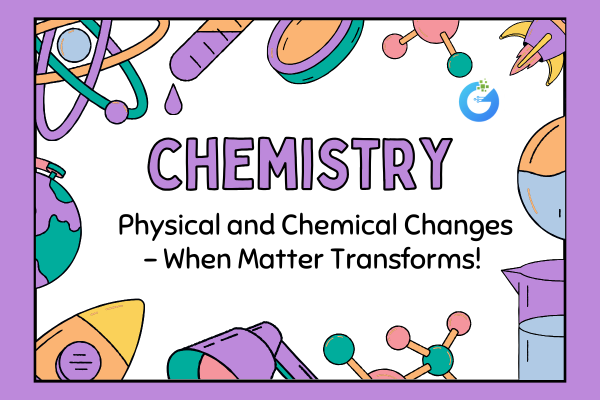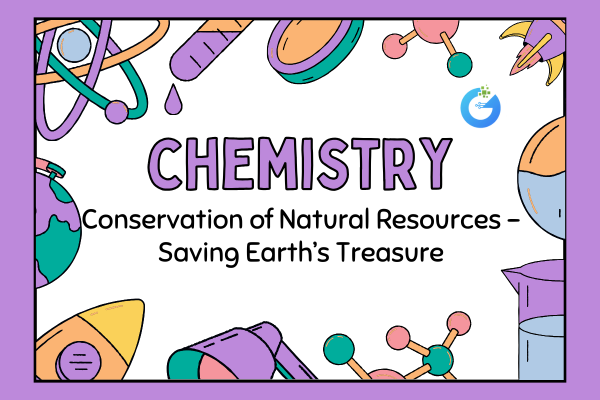Introduction – What’s Changing and How?
Have you ever seen ice melt into water or watched paper burn into ashes? Both are changes—but not the same kind! One is a physical change, and the other is a chemical change. In science, it’s important to know how things change, because not all changes are permanent or involve new substances. Let’s take a closer look at these two exciting types of changes that happen all around us—at home, in nature, and even inside our bodies!
expert-led Chemistry classes – visit our website to learn more
What Are Physical Changes?
A physical change is a change in the form, size, shape, or state of a substance, but no new substance is formed. These changes are usually reversible, meaning you can get back the original substance. Think about folding paper, melting ice, or dissolving sugar in water—these are all physical changes because the substances involved are still the same at the end.
Let’s explore some examples:
- Melting of ice into water: The ice changes state, but it’s still water—just in a liquid form.
- Boiling of water into steam: Steam is still water, only in gas form. It can be condensed back into liquid.
- Tearing a piece of paper: The shape changes, but it’s still paper with the same properties.
- Dissolving salt or sugar in water: The salt or sugar disappears into the water, but the taste shows it’s still there. You can get it back by evaporating the water.
In each case, we can still identify the original material. Ice is still water, even if it’s melted!
What Are Chemical Changes?
A chemical change is when a completely new substance is formed, and the change is usually irreversible. These changes are often accompanied by signs like heat, light, color change, gas release, or a new smell. Once the change happens, you can’t easily get back the original materials.
Let’s look at some real-life examples:
- Burning of paper or wood: When paper burns, it becomes ash and smoke—a totally new substance.
- Rusting of iron: Iron reacts with oxygen and water to form rust, which is flaky and reddish-brown.
- Cooking food: Heat causes raw ingredients to combine and change, forming a new taste and texture.
- Digestion of food in our body: Food is broken down into simpler substances through chemical reactions.
- Souring of milk: Bacteria cause the milk to turn sour by forming new substances like lactic acid.
In these changes, the new substance has different properties from the original ones. For example, rust is completely different from the shiny iron it came from.
How to Identify the Change – Physical vs. Chemical
Understanding whether a change is physical or chemical can be tricky, but there are some signs to help us. Let’s compare the two in a simple way:
| Clue | Physical Change | Chemical Change |
| New substance formed? | No | Yes |
| Reversible? | Often | Usually not |
| Change in shape/state? | Yes | Sometimes |
| Heat/light produced? | No | Often |
| Example | Ice melting | Paper burning |
Always remember: if no new substance is made, it’s physical. If a new material with different properties appears, it’s chemical.
Core Concepts – What You Should Know
To make these changes easier to understand, here’s a table with the key ideas:
| Concept | Meaning | Example |
| Physical Change | Change in shape, size, or state with no new substance | Melting ice, dissolving salt |
| Chemical Change | Change where a new substance is formed | Burning wood, rusting iron |
| Reversible Change | Can be undone | Freezing water |
| Irreversible Change | Cannot be undone | Cooking an egg |
These concepts help us recognize changes in the world around us—from science labs to kitchens!
FAQs – Curious Questions About Changes
Q1: Is boiling water a chemical change?
No! Boiling water is a physical change because water vapor is still made of water—it just changed state.
Q2: Can a chemical change be reversed?
Most chemical changes cannot be reversed easily, though in special cases (like some chemical reactions), scientists can reverse them using other reactions.
Q3: Is dissolving sugar in water a chemical change?
No, it’s a physical change—the sugar is still there and can be recovered by evaporation.
Fun Facts About Physical and Chemical Changes
- Water is the master of physical changes—it can go from solid to liquid to gas and back again without becoming a new substance.
- Fireworks involve rapid chemical changes that produce light, sound, and color.
- Plants perform a chemical change every day—this process is called photosynthesis, where sunlight helps create food.
- Making butter by churning cream is a physical change—no new substance is formed; it’s just a change in texture and state.
Conclusion – Spot the Science in Everyday Changes
Physical and chemical changes are happening all the time—in the kitchen, in nature, and even inside our bodies. When you see something melting, burning, rusting, or cooking, now you’ll know whether it’s a physical transformation or a chemical reaction. Recognizing these changes helps us understand matter better and unlocks the secret of how the world around us keeps changing.








